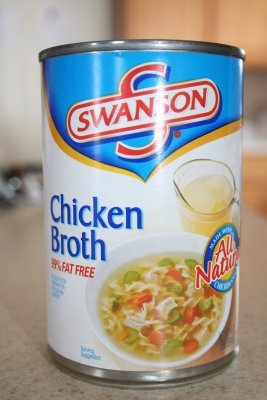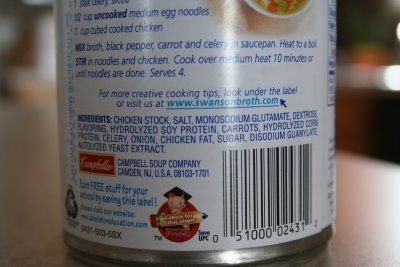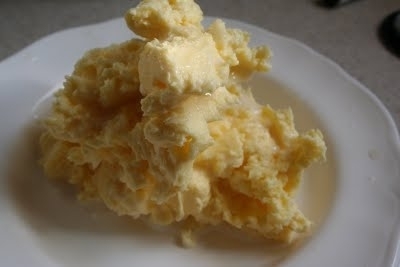
Yes, I do, make our butter.
I don’t make all of our butter, but for buttering toast, bread and veggies I make and use wonderful raw, grass fed butter. Not only is it yummy it is actually good for you! Imagine that!
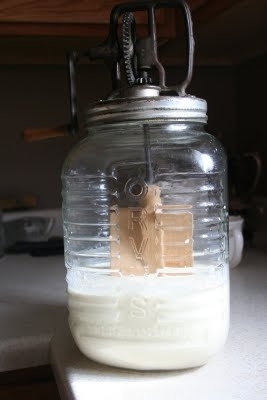
One big change we have made is from drinking organic grain fed vitamin D fortified processed milk (homogenization and pasteurization is processing) to whole raw grass fed organic milk.
For more information you can go here:
http://www.westonaprice.org/splash_2.htm
http://www.realmilk.com/
http://www.raw-milk-facts.com/raw_milk_health_benefits.html
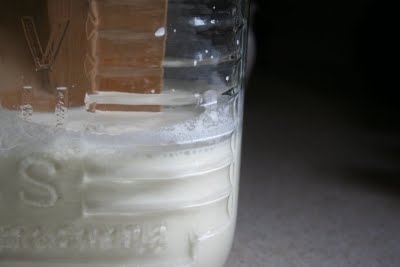
First I collect the cream from off the top of my milk. I don’t skim it all off, I want some of the butter fat in the milk so the fat soluble vitamins could actually work when we drank the milk. Once I had collected a couple of quarts it is butter making time! I let the cream sit for a couple of hours on the counter to warm up, then I pour it all into my churn.
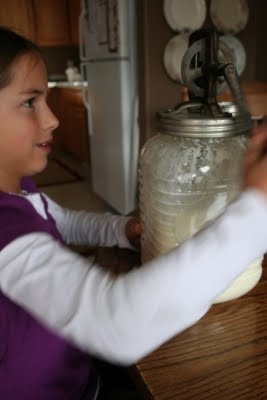
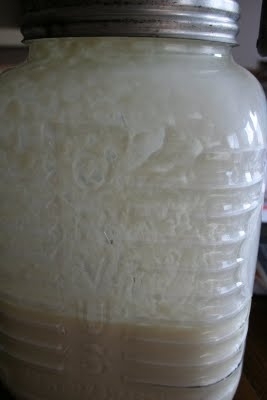
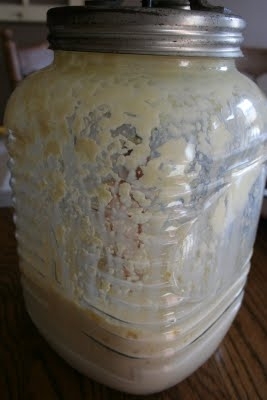 And in a little bit the butter fat will start to separate from the liquid.
And in a little bit the butter fat will start to separate from the liquid.
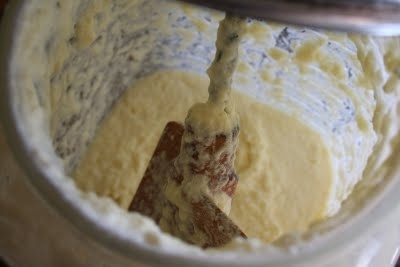
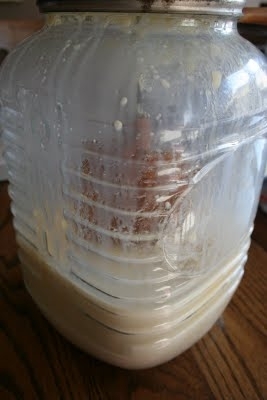
Just a bit more churning and the butter fat collects into a nice big lump floating in the sweet butter milk.
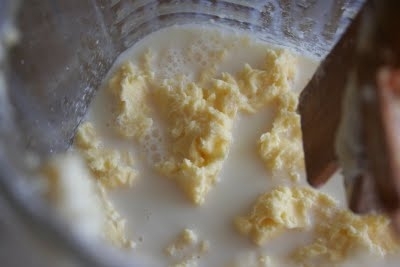

Once the butter is out of the churn it need to be rinsed and rinsed in cold water until the water runs clear. I need to get all the butter milk out, so it won’t go bad sitting out. Isn’t it pretty and yellow, this yellow coloring is all the vitamin A concentrated in the butter fat. A lot of commercial butter will add a little coloring to give their butter the yellow color.
The color of grass fed butters change over the season. In the spring the butter can be almost orange from all the vitamins gleaned from fast growing spring grasses. In the winter it will be whiter, because the hay has less vitamin A in it.
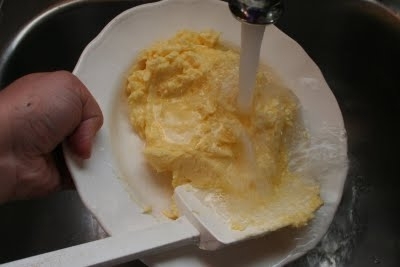 After that, a little salt
After that, a little salt
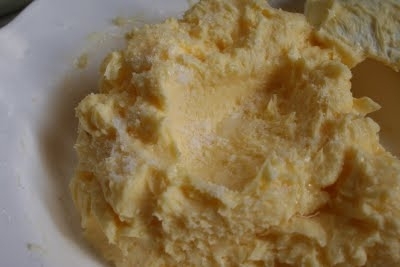 I then pack it into little jars and put it in the freezer until needed. The jar that I am taking butter from stays in the fridge until it is needed, then I take it out for a couple of hours before hand to soften.
I then pack it into little jars and put it in the freezer until needed. The jar that I am taking butter from stays in the fridge until it is needed, then I take it out for a couple of hours before hand to soften.
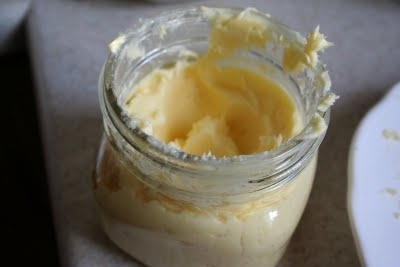 (I love these little squaty bottles)
(I love these little squaty bottles)
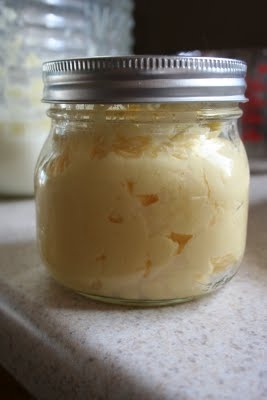 The left over butter milk (it is sweet, very different from cultured buttermilk that we are all familiar with) is saved for use in recipes.
The left over butter milk (it is sweet, very different from cultured buttermilk that we are all familiar with) is saved for use in recipes.
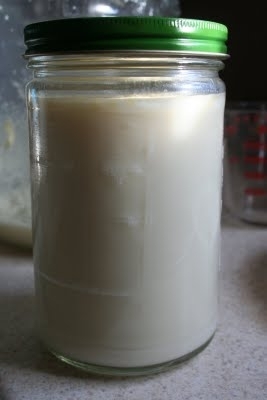 Is making butter this way cheaper than what I can buy at the grocery store? No, but the extra expense is worth it to me. We literally are what we eat, if we are eating overly processed foods with synthetic vitamins and minerals our body is not going to function very well. We will be chronically tired and suffer from degenerative illnesses. Our bodies have been eating natural whole foods for thousands of years, it has only been in the last 100 years or so that we have changed the foods we eat, even something as simple as milk and butter are completely different that what our ancestors ate long ago. It isn’t surprising to me that the incident of degenerative disease has gone through the roof in the last 50 years.
Is making butter this way cheaper than what I can buy at the grocery store? No, but the extra expense is worth it to me. We literally are what we eat, if we are eating overly processed foods with synthetic vitamins and minerals our body is not going to function very well. We will be chronically tired and suffer from degenerative illnesses. Our bodies have been eating natural whole foods for thousands of years, it has only been in the last 100 years or so that we have changed the foods we eat, even something as simple as milk and butter are completely different that what our ancestors ate long ago. It isn’t surprising to me that the incident of degenerative disease has gone through the roof in the last 50 years.
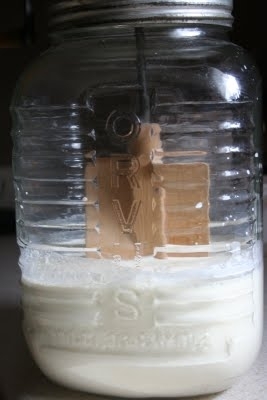
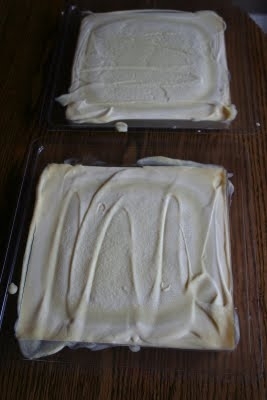
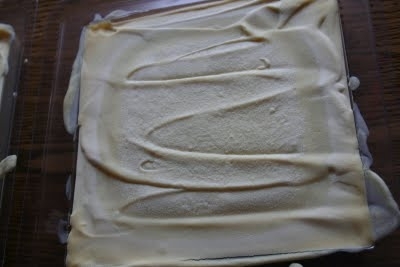
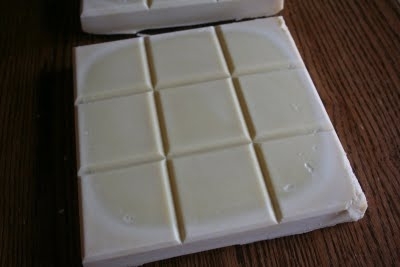
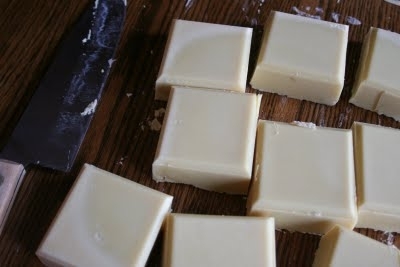
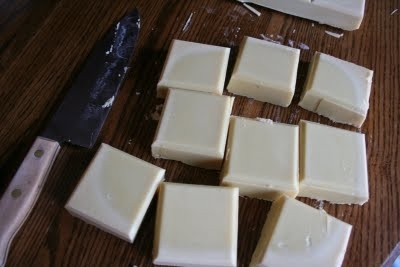
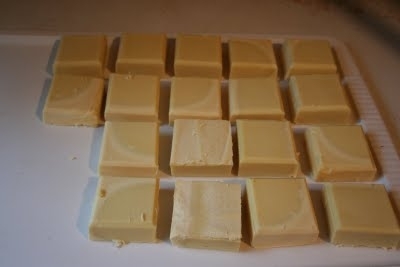
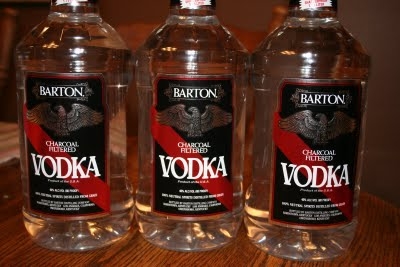
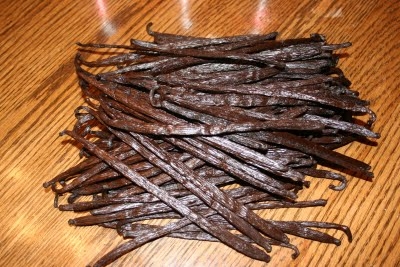
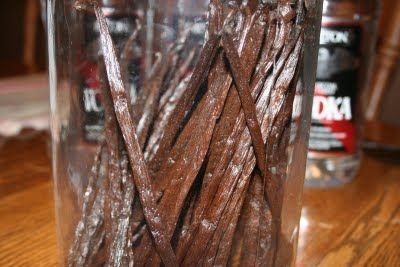
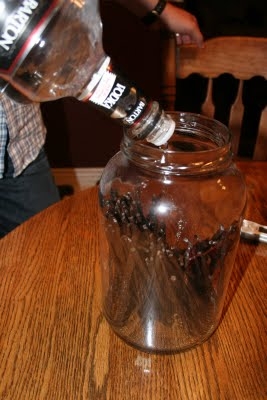
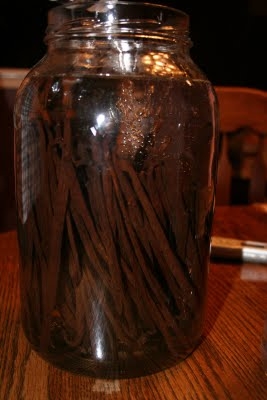
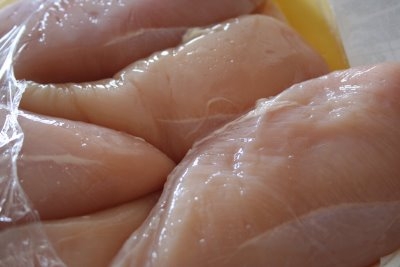
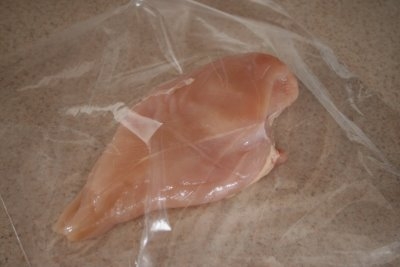
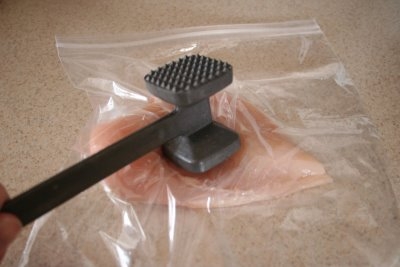
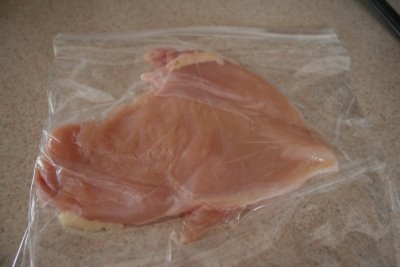
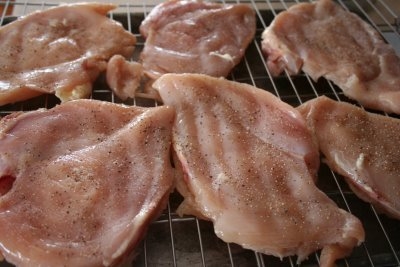
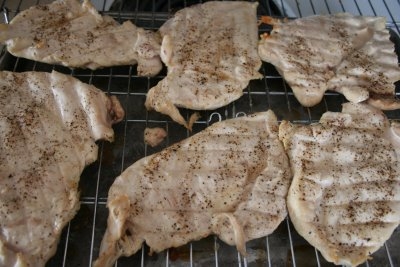
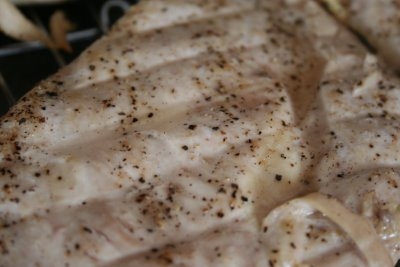
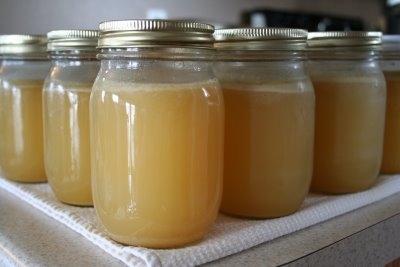
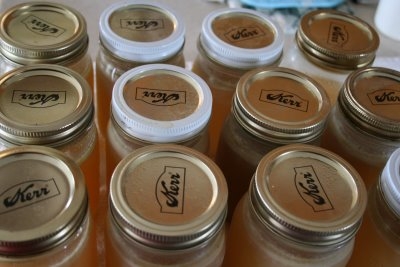 As I mentioned before, I like canning because it give me the ability to control what is in my food without spending a fortune. I wanted to see what is in a store bought can of chicken broth, so I dug one up one lonely can and read the label.
As I mentioned before, I like canning because it give me the ability to control what is in my food without spending a fortune. I wanted to see what is in a store bought can of chicken broth, so I dug one up one lonely can and read the label.